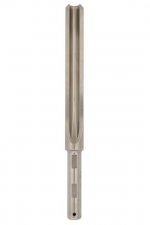This is a subtlety - the basic difference is in the shape of the flute. Spindle gouges have a fairly shallow flute, while bowl gouges have a fairly deep flute that can be a pronounced U shape, a V shape, or parabola that is neither a U or a V. As a result, the bowl gouge is better when hollowing the interior of bowl, while the spindle gouge is preferred when doing fine details, buts these are really rough categories and there can be a lot of crossover.
Irish grind refers to the shape of the outer wings of a gouge rather than the shape of the flute. Irish grind means that the wings are swept back to form a more severe point. Irish grind is usually achieved using a jig that allows the gouge to be moved in an elliptical path as it is being ground (although some turners have mastered the art of doing an Irish grind by hand without a jig). The conventional grind is conical and is achieved by holding the gouge in one position while rotating the end against the grinding wheel or belt. Most gouges come from the factory with a conventional grind. There is a place for both grinds - because the Irish grind is more pointed and has longer wings, it tends to be well suited for cutting the interior sides of bowl, while the flat face of a conventional gouge makes it better for cutting the inside bottom of bowls.
Both spindle gouges and bowl gouges can be used on both spindle and bowl (face grain) turnings - if you have a selection, you can choose the tool that gives the best result. In both spindle and bowl gouges, the flute is ground into a round metal shank.
There is one notable exception - the spindle roughing gouge is a conventionally ground gouge with a circular flute and with a narrow shank. This tool is made by forging flat metal stock into a round shape. The spindle roughing gouge is intended for bulk removal of material on spindle turnings ONLY and should not be used on face-grain turnings. The reason is that the narrow shank is a weak point that can break with catastrophic results if you get a catch - which can easily happen when it is used to cut face grain.


